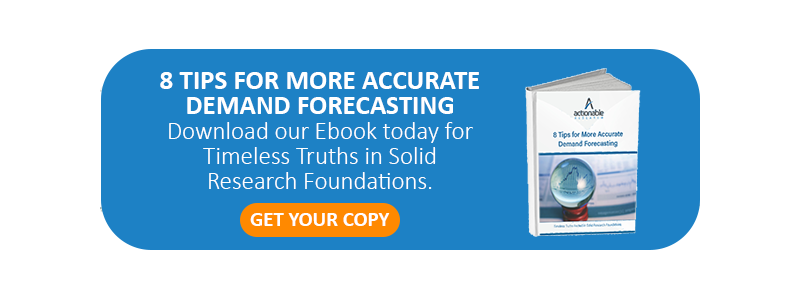This post is the sixth and final blog in a series on the 5 Common Flaws that Lead to Product Failure. To access the whole message, make sure to read parts one, two, three, four and five.
The Final, Fatal Flaw
The last type of product failure is difficult to make concrete, relatively foolproof suggestions on how to avoid. Sometimes, a company finds something new and wonderful. Under the circumstances, a company must take chances and bring a new product like this to market. The risk of product failure is often worth the alternative possibility that the product will be a major hit.
Sometimes, there is a very hot, very cool and elegant solution to a problem that is in fact, disruptive. While that word is overused today frequently, we are also regularly confronted with new innovations which disrupt old ways of doing things and open up new markets (think Uber and AirBnB). Yes, sometimes it new, hot, disruptive and revolutionary. In fact, it’s potentially life changing, but it never reaches its potential because in fact it is TOO different.
Is it possible to perform research to determine whether a product like this will reach its potential?
Why, yes.
In the case of a novel product, a combination of qualitative and quantitative research is needed to get to the root of general appeal and preference; this will also structure the future product narrative and positioning.
Flaw 5, a product being too revolutionary to catch on due to it being too different, is controllable only with excellent experience design and product marketing:
- Experience design – the product must be so easy to use it is a natural move to switch.
- Product marketing – the message and positioning for the product must adequately communicate the magnitude of the value proposition.
The message must involve understanding the customer’s motivations for purchase, educating the consumer about the product’s novel uses and benefits, and most importantly how to incorporate both of these into the product’s marketing campaign.
I say controllable because sometimes, it is important to acknowledge these seismic changes to a market are very difficult to predict. That, however, does not mean we should not try to do so.
So, what’s the marketing and sales team to do?
The Solution
Part 1 (Qualitative): Focus groups and/or in-depth interviews (IDIs)
When a product pushes the boundaries of what is conventional, it will require a marketing campaign that is coupled with customer education. Focus groups and/or IDIs involve gathering potential consumers to discuss, in depth, a product’s advantages, appeal, and its disadvantages. Done properly, and keeping them focused on the elements above, this effort can be very fruitful.
The interviews are guided by a host who poses questions about the product and allows for the participants to express their unaided, unfiltered, and natural responses. These interviews reveal how and if a product can become integrated into their lives. Time and effort are evaluated, new non-natural tasks which are along the path of product adoption are evaluated and minimized and/or removed if possible. At the end, assuming all involved are in line with the optimization effort, an improved experience can be crafted.
In the course of these interviews (and likely separate interviews), participants also discuss their motivations for what they use to solve their current problem and why (may be a competitive solution or not), and how the new product compares in several areas: utility or luxury, unique value proposition, core benefits and price, as well as others depending on the product and category. These interviews are a good initial first step in determining opportunity for a disruptive product.
This exercise may also involve the more formal testing of messaging and creative.
To learn more about which form of qualitative research is right for your project, read our whitepaper “Focus Groups or IDIs?”
Part 2 (Quantitative): Survey research including a segmentation exercise
Once the product experience is optimized and the messaging approach understood, a product test including some price test component is warranted. The type of price test to employ is beyond the scope of this paper; we will explore this question in future series.
A very important part of the quantitative research is determining which members of your target audience is most interested in your product. Is this a product that would appeal to a significant percentage of its target audience? If so, what percentage, and what makes them different than the universe of audience members?
In our humble opinion, best way to find out which audience members are most interested in a revolutionary new product is through the use of a segmentation exercise, integrated within the quantitative survey. Clearly understanding who is most interested and what they are most interested in are critical pieces of information. Are the people most excited about the revolutionary new product a group of highly technical or unusual individuals or is it accessible to most of your audience?
To learn more about the product concept testing, check out our method spotlight on “The Most Important Two Key Takeaways from Product Concept Test.”
How We Can Help
If all of this seems challenging, it certainly can be. Marketing research can be misleading if it is not properly focused in these cases. Actionable Research specializes in product development marketing research.
It is my hope you have had an opportunity to read more of our posts how better forecasting and product development marketing research will reduce product failures. I also hope, as you move through your next product development and marketing effort, you will consider Actionable Research as a partner to increase your likelihood of success.



